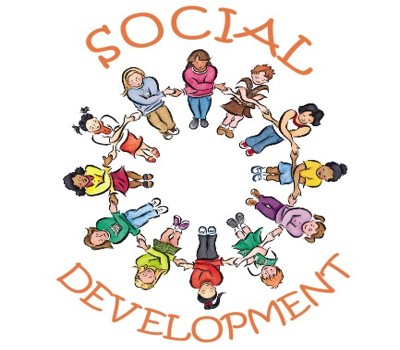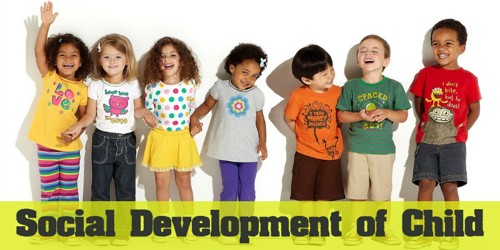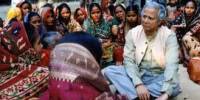Social Development of a Child
The concept of social development lies in the concept of socialization. It refers to the process by which a child learns to interact with others around them. To understand that, we have to understand socialization at the time of his birth, a child is very selfish. He does not know about sharing his joys and toys with others.
Social development involves learning the values, knowledge, and skills that enable children to relate to others effectively and to contribute in positive ways to family, school and the community.
Round die age of two, he realizes that he is just a little man in the complex order. Others also matter and that he alone does not matter. Giving and taking starts.
Various authorities have also defined social development. Few are quoted below:
Freeman and Showel, “By social growth and development we mean increasing ability to get along well with one and others.”
Hurlock, “It is attaining of social relationship.”
In nutshell, socialization means:
(i) Contact with people-its beginning,
(ii) Dealing with people and learning from them,
(iii) It is a conscious activity. It does not take place automatically.

Babyhood
Baby deals with adults in his/her immediate environment. According to Mrs. E. B. Hurlock, the important patterns of his social development during this age are:
2nd month on hearing a voice, the baby turns his head.
4th month Stops crying when talked to and makes movements in anticipation of being lifted.
6th month In touch with the adult ‘talks’ to adult.
2 years. The baby likes to do things independently and runs around for the adults-he can bring the newspaper lying at a gate when asked to and when the baby is in the mood. Learns to imitate adults
Early Childhood ( 2-6 YEARS)
- Becomes active members of the group. He participates in group activities.
- ‘Parallel play’ activity is no longer there.
- Social development during this stage depends much on his relationship with his parents. He can become likable individual if a relationship is not cordial he will become assertive.
- He has many friends and shows preferences for friends.
- His patterns of social behavior are-(i) Aggression, (ii) Quarrels, and (Hi) Selfishness.
Latter childhood (6-12 YEARS)
(i) This is called school going age.
(ii) The number of friend’s increases manifold-permanent associations are formed. Social interaction is at its maximum.
(iii) The child is capable of dealing with many social situations.
Gang Age
Later childhood, social development-wise is also known as gang age. Formation of gangs is the peculiar feature of social development in this age.
Gang means a small group or a spontaneous local group. It is formed by children themselves. It is not authorized from outside.
- Gang has a leader who issues commands.
- Gang has a code of ethics.
- Gang has a secret language.
- Girl’s gangs are smaller and firmer.
- Gangs meet at a secret place or hideout.
The activities of the gang are mostly anti-social- teasing old men, bullying small children-stealing fruit from neighbor’s garden, fights with other gangs, tearing posters, throwing stones in neighbor’s courtyards etc.
Sex Differences
It is at this age-sex differences come in. Boys and girls become conscious of their sex and they tease one another.
(i) Social activities depend upon sex.
(ii) They are conscious of social approval and disapproval.
Information Source:
















